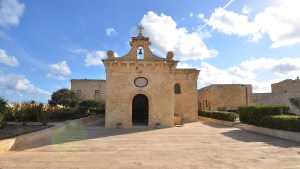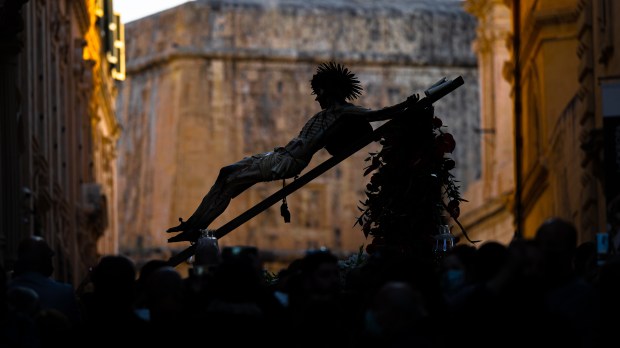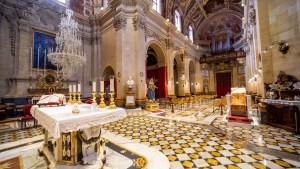Some claim Malta is one big church. But whereas there is a lot of truth to that, it is also the case that this one big church is surprisingly diverse. It is, if you will, a remarkable mosaic with more than 2,000 years in the making (Christianity in Malta is as ancient as in Ephesus, Rome, or Jerusalem itself), and every little tessera of the mosaic happens to be equally important, interesting, captivating. Pilgrims walking the Maltese and Gozitan trails will soon find themselves standing in front of an early medieval church, a magnificent Baroque cathedral, a paleo-Christian catacomb, or the places associated with St. Paul’s shipwreck in Malta, as told in the Book of Acts.
The Maltese and Gozitan countryside are thus generously dotted with seemingly countless ancient chapels – each one with its very own history, images, architectural and artistic treasures and, perhaps more importantly, actively worshiping communities. In fact, there is no other Christian land in Western Europe that can boast of such a great number of chapels per square kilometer. Some have even tried to count them, and the number goes above 365 churches in total, major sanctuaries included. Naturally, the Maltese would often joke saying they could attend Mass in a different church every day of the year if they wanted to. What might seem like a rather lovely pious exaggeration (one cannot but wonder why so many churches in a country that is 2.5 times smaller than New York City) makes sense if we consider two main factors. On the one hand, Malta is the European country with the highest population density, with just under 1,300 people per square kilometer. On the other, it is also the country with the highest percentage of Catholics on the entire continent: almost 98% of the Maltese are proudly Catholic.
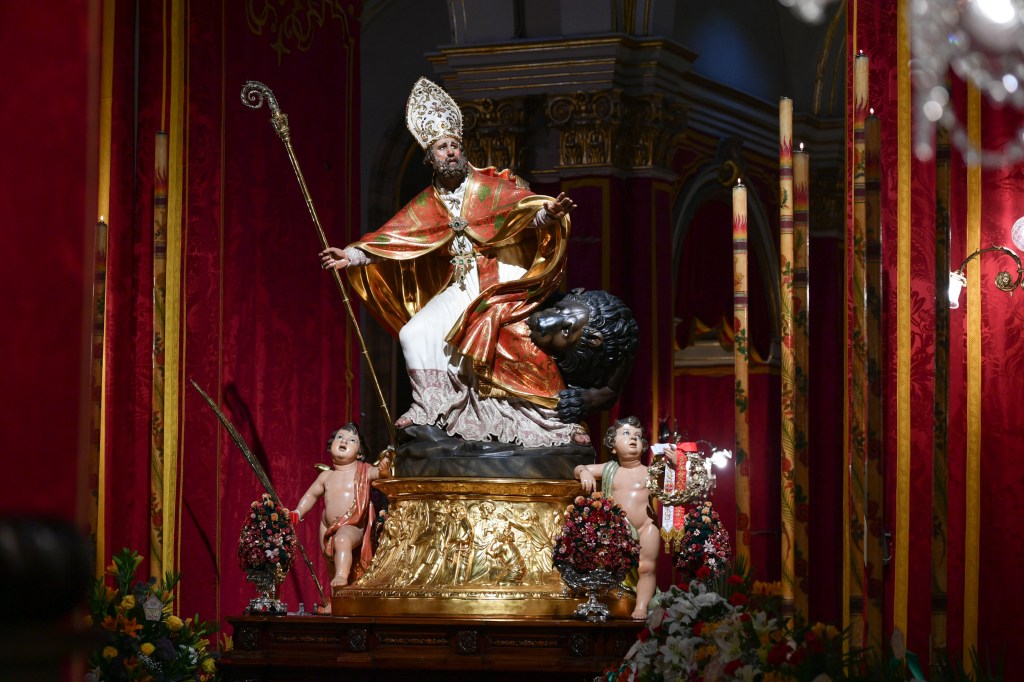
The Maltese and the Gozitans have always had a steadfast love for their Catholic faith. Whereas it is true, as Professor Stanley Fiorini explains, that “Christianity in the islands did not spread like fire,” and that “we find evidence of pagan religions still doing well in the 2nd century,” it is also the case that after Constantine’s Edict of Milan in 313, the “new religion” (that is, Christianity) became not only viable but predominant in the whole archipelago. Every settlement had at least one church – some of them built on top of ancient pagan temples. However, many other churches and chapels, such as those of Bir Miftuħ and Ħal Millieri, can be found standing alone in the open countryside. Several of these chapels now seem to be isolated because the villages associated with them were abandoned centuries ago, but other chapels were, and still are, purposely built in remote locations, such as those in the cliffs of Dingli, or in very fertile valleys like that of Wied l-Lunzjata in Gozo.
Almost all of the chapels, in their rustic simplicity, tell different stories. The same goes for the many impressive, solemnly majestic churches of Malta and Gozo. And now, there are trails that unite them all so that pilgrims in the archipelago can treasure Malta’s ecclesiastical, cultural, and spiritual heritage.
Maltese Church Trails
Pilgrimages, religious itineraries, and walks allow believers to embark on a physical and spiritual journey to a sacred place associated with religious events, lives of saints, relics, or early places of worship. In Malta, all of these come together seamlessly.
Jesus Himself embarked on several significant journeys, including his pilgrimage to Jerusalem for the Passover and his subsequent crucifixion and resurrection. The disciples, following Jesus’ example, embarked on missionary trips, spreading the message of the Gospel and establishing Christian communities. One of these early disciples, Paul himself, was shipwrecked off the northwestern coast of Malta and spent the unnavigable winter months there. During his stay he established the very roots of Maltese Christianity.
The MTA and XirCammini have revived and developed historical and non-historical caminos and religious routes, which are an invitation to embark on a voyage of spiritual discovery. In total, there are (for now) six different pilgrimage caminos – one of them being part of the legendary Way of Saint James.
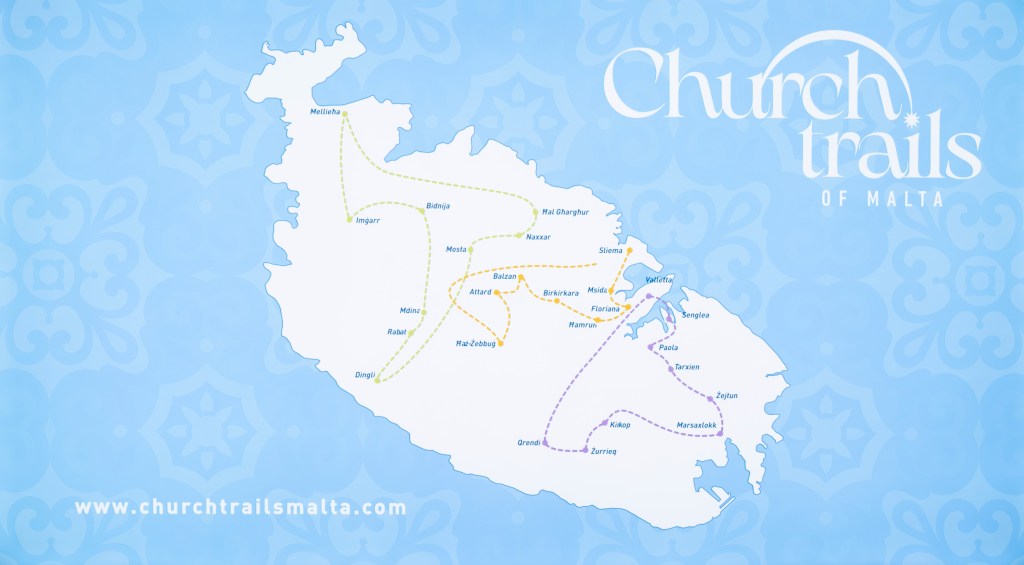
In addition to these already existing caminos, the Archdiocese of Malta’s Cultural Heritage Foundation has recently launched the Church Trails initiative. Various churches, their treasures and works of art have been restored and conserved, and trails have been created, through a project supported by the European Regional Development Fund. Church Trails strengthens the position of already frequented churches and introduces less popular ones with tourists.
Furthermore, these trails provide visitors with the opportunity to organize their own tour, but also explore alternative Marian and Pauline routes and sites, where one finds profound devotion to the Blessed Virgin Mary and St. Paul being fostered, preserved, and disseminated.
Also, the Gozo Ecclesiastical Heritage Trail is a remarkable journey, encompassing 13 distinct sites and initiatives dedicated to the conservation and preservation of churches, religious relics, and religious cultural heritage sites. The project even offers an online gateway, which provides insights into every location so pilgrims and tourists alike can plan their trip according to their own preferences. These sites also provide a unique opportunity to delve into the restoration and conservation efforts. It is a trail that unveils the rich tapestry of Gozo’s religious history, inviting one to witness the beauty and significance of these cherished sites.
Three different trails
Church Trails can be divided in three main areas: North, Center, and South. Accordingly, the Northern, Central, and Southern Trails were designated as the geographic zones for clustering areas. The overall project focuses on cultural assets and religious traditions, including the restoration of the external structures of churches and chapels, conservation of works of art, restoration of artifacts, and the valorization of religious historical artifacts.
Just as an example of the many spiritual and cultural treasures that these trails cover, as pilgrims walk the Northern Trail, they enter the Silent City of Mdina. There, the imposing Metropolitan Cathedral of St. Paul awaits them. Whereas the actual cathedral was designed by Maltese architect Lorenzo Gafà in the 17th century, tradition claims a very early Christian church was already there – some affirm this is the place where the house of Publius, the Roman governor of Malta who would then become its first bishop, once stood.
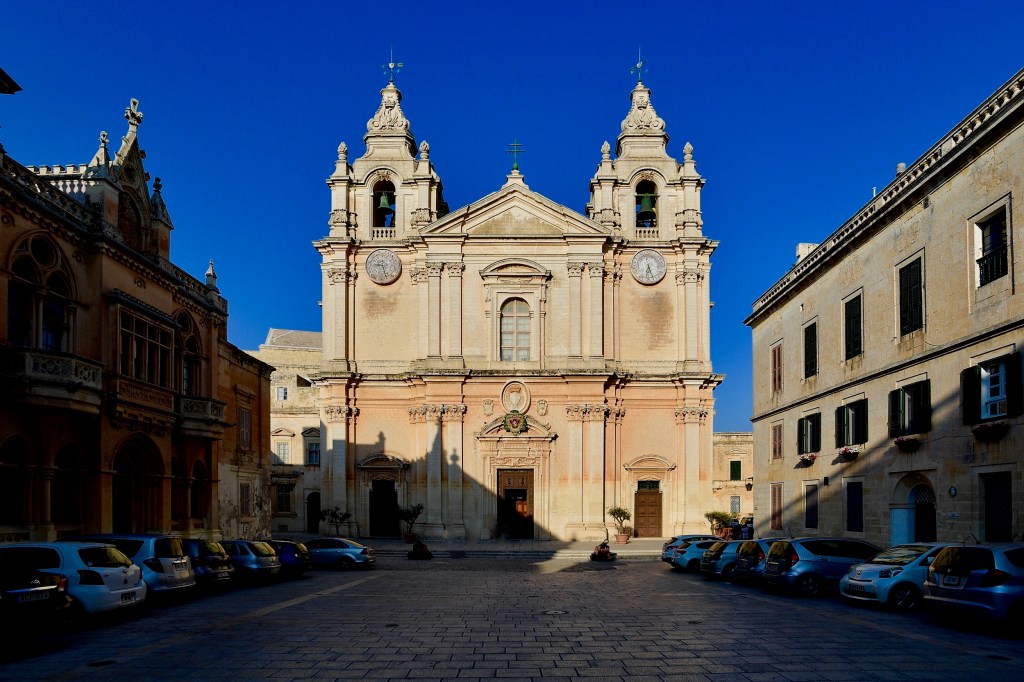
The Central Trail also boasts its own treasures, among them the parish church of St. Gregory the Great in Sliema – a Romanesque-style church that was actually built in the 20th century thanks to the initiative and efforts of Archbishop Mauro Caruana. During WWI, Caruana observed that wounded British servicemen were recovering in Sliema and pledged to build a church close to the hospital so that they could also recover spiritually. A Benedictine monk himself, Caruana chose to dedicate the church to the saint who saw to the Christianization of England. He himself paid for the land on which the church was built, as well as for the church itself. He is buried at the crossing beneath the dome, his funerary tombstone marked by his episcopal coat-of-arms.
Finally, the Southern Trail passes by the Archbishop’s Palace in Valetta, one of the many remarkable Baroque buildings in the Archipelago. It was built between 1622 and 1632, following a design traditionally attributed to the Maltese architect and sculptor Tommaso Dingli. In the 18nth century, its façade was embellished with a magnificent Baroque portico, in keeping with contemporary trends in civic architecture. It was built as both the residence for the bishop, later archbishop of Malta, and an administrative center for the Diocese of Malta. It continued to serve both purposes until the late-20th century.
This content has been brought to you in partnership with the Malta Tourism Authority.
